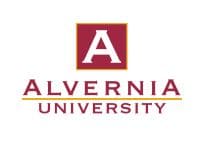Case studies / Alvernia University
Alvernia University Doubles Performance of SQL Application with Condusiv I/O Reduction Software

“With Condusiv, we were able to double performance on our heaviest workloads while reducing ongoing hardware costs.”
Challenges
- User complaints about sluggish performance of their LMS application sitting on an SQL database
- The LMS would timeout on students taking tests, resulting in escalated HelpDesk tickets
- Monthly reboots to refresh servers
- Unable to virtualize all SQL applications due to performance concerns
Benefits
- 50% or greater application performance improvement – with no additional hardware
- Latency and throughput dramatically improved
- True “set and forget” management
- Compatible with all SAN/NAS systems
- Easily deploys to the largest virtual, physical or cloud environments in just five clicks
- Before-and-after performance reporting to validate performance gains
- Enterprise-wide visibility into I/O performance, from VM to storage
Environment
- Applications – Blackboard LMS application running on an SQL backend
- Servers – IBM x3650 m4
- Operating System – Windows Server 2008/2012 R2
- Hypervisor – VMware vSphere 5.1
- Storage – EMC VNX 5300 with SSD & SAS
- Network – 10GbE iSCSI
Features
IntelliWrite® I/O reduction technology
automatically prevents split I/Os from being generated when a file is typically broken into pieces before write and sequentializes otherwise random I/O generated by the “I/O blender” effect.
IntelliMemory® intelligent caching technology
caches active data from read requests using available server memory.
“Time Saved” Benefits Dashboard Shows the ongoing benefit of the software by revealing the amount of I/O offloaded from storage and how much time that saves.
Benefit Analyzer™ embedded benchmark provides before/after performance comparisons prior to installing V-locity and after.
When the IT team at Alvernia University was facing faculty and student complaints about the performance of their Learning Management System (LMS), they needed to find a way to improve performance while reducing costs.
THE CUSTOMER
Alvernia University, a private university located in Reading, Pennsylvania, is a thriving university that empowers students through real-world learning to discover their passion for life, while providing the education to turn what they love into lifetimes of career success and personal fulfillment, helping them make the world a better place.
THE CHALLENGE
With 3,000 students and 500 faculty, one of the most critical applications the university depends on is Blackboard®, their Learning Management System (LMS). Blackboard helps educators author, manage and share class-related content and assessments.
Since Alvernia relies so heavily on their LMS application to support their digital education efforts, performance is paramount. The LMS application servers are connected to an SQL cluster leveraging an EMC® VNX 5300 storage backend containing both flash and SAS.
The Alvernia IT team virtualized their Windows servers to improve the efficiency of their server resources, but noticed they were getting performance issues related to the “I/O blender” effect – a result of mixing workloads from multiple VMs down through a single hypervisor, that then sends a very random I/O pattern out to storage.
Users were complaining about slow response times and slow loading times. Some of the tests were even crashing. A student might start the test only to have it timeout which led to notifying the instructor, then on to the IT team. The Alvernia IT team first upgraded from 1GbE to 10GbE iSCSI, but were still getting performance complaints. As a next step, the team was considering more flash as part of a forklift upgrade but thought they should try Condusiv’s V-locity® I/O reduction software first before making that level of CapEx investment.
“Our university depends on the performance of our Blackboard Learning Management System to drive education efforts. As both students and faculty were complaining about sluggish performance, we were facing an expensive flash hardware investment to tackle the problem,” said Rich Reitenauer, Manager of infrastructure Management and Support, Alvernia University.
THE SOLUTION
Rich heard about V-locity I/O reduction software and how customers were benefiting from significantly improved SQL performance in virtual environments.
“Since we were facing an expensive forklift hardware upgrade to improve the performance of our learning management system, it seemed like a ‘no-brainer’ to at least evaluate V-locity I/O reduction software first to see what kind of performance gains it could deliver,” said Rich.
V-locity (now new DymaxIO™) is bundled with an embedded benchmark called the “Benefit Analyzer” that provides a granular I/O profile of virtual machine workloads, allowing users to easily quantify the before/after performance benefits of V-locity in their real-world environment for full transparency.
Installed on Windows VMs at the operating system layer, V-locity nondisruptively optimizes I/O at the source – reducing the I/O requirement for any given workload. V-locity sequentializes otherwise random I/O created by the “I/O blender” effect of multiple VMs funneling I/O streams down to the hypervisor. By reorganizing this random pattern to behave sequentially as a single, contiguous I/O, less I/O is required for any given file.
Since more data is now processed with each I/O operation, organizations achieve greater throughput and improved response times. Subsequent reads also benefit, since only minimum I/O is required to fulfill the data request. In addition, V-locity employs a behavioral analytics engine that dynamically caches active data in available server memory to further reduce I/O demand on storage devices and improve latency.
THE RESULT
After deploying V-locity across their Windows VMs, Alvernia saw over 100% improved performance of their Blackboard LMS. Instead of getting 20 complaints a week related to performance, they were no longer getting any. They also no longer needed to do monthly reboots to refresh servers.
“Typical IT administrators respond to application performance issues by reactively throwing more expensive server and storage hardware at them, without understanding what the real problem is. Higher education budgets can’t afford that kind of brute-force approach. By trying V-locity I/O reduction software first, we were able to double the performance of our LMS app sitting on SQL, stop all complaints about performance, stop the application from timing out on students, and avoid an expensive forklift hardware upgrade,” said Rich.
Response times dropped from 55MS to 5MS. Since the application was so read-heavy, they achieved a 75% cache hit rate. Instead of taking 2.9 min to process 1GB of data, V-locity dropped the time to process 1GB to 1.5min, doubling throughput.
“After deploying V-locity, one of the very first comments we received was from a faculty member who said, ‘Dude, did you do something today to the LMS because it’s A LOT faster,’” said Rich.
Alvernia was also getting performance complaints about their energy management application that also sits on an SQL database and after deploying V-locity, those complaints went to zero.
“With V-locity, we were able to double performance on our heaviest workloads while reducing ongoing hardware costs. In addition, we now have the confidence to virtualize the rest of our SQL server applications,” said Rich.
